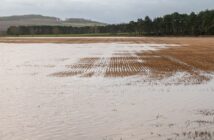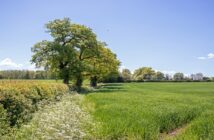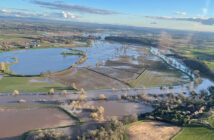A 76 per cent increase in Countryside Stewardship Scheme (CSS) applications is being reported by one agricultural business consultancy amid signs that farmers are adapting their businesses to the cut in direct subsidies.
Brown&Co says it has submitted applications for 315 clients farming 158,800 acres and encompassing 33,000 acres of scheme features in the last application window.
The CSS offers financial incentives to help farmers look after and improve the environment.
Brown&Co is seeking to secure over £38,000,000 across their client base over the life of their agreements.
Based on the company’s CSS applications this year, clients are receiving an average of £419/hectare (ha) for land put into stewardship.
“Farm businesses are starting to embrace the fact that they’re in the agricultural transition period and that BPS is decreasing,’’ says James Brown, partner at Brown&Co.
“CSS is a guaranteed annual income, providing payment for valuable environmental benefits.’’
Compared to last year, the company had seen a 20 per cent increase in land with CSS options on it, with 37% of land entered into a CSS agreement having CSS options on it.
The mid-tier schemes and wildlife offers provide options to protect and enhance the natural environment, particularly soil and water quality and wildlife and biodiversity.
The mid-tier schemes also provide an opportunity to apply for a range of capital items.
Mr Brown says in the last 12 months over 3,500 km of fencing was applied for.
“Yard infrastructure capital items were also popular with 43,000m2 of concrete yard renewal, 5,300m of guttering and downpipes and 12,800m of hardcore tracks,’’ he says.
Many more applications have included cover crops this year, reflecting the growing interest in regenerative farming.
With the exception of the wildlife offers, the scheme is designed to be competitive with funding awarded for either field management options, for which payments are made annually for five years, or for capital items: there is a range of two-year grants for specific infrastructure works and also one-off water capital grants.
Focusing on net margin contribution from varying land uses helps farmers to select the best mid-tier rotational and fixed options, says Lottie Hill, Agri-Environmental Consultant at Brown&Co.
This eliminates some loss-making break crops or land uses, enables change to fixed cost structures and improves overall profitability in a sustainable way, she adds.
Getting the best from a CSS application
The application window for CSS mid-tier and wildlife offers CSS is expected to open in spring 2022 and will close at the end of July 2022, with agreements to start in 2023.
Designing and submitting a countryside stewardship scheme can seem a daunting process, says Ms Hill.
Here she gives her top tips on how farmers can make the most of their application.
- Creating the ideal countryside stewardship scheme for the farm takes time. The sooner you engage with the process the easier it is. Each year the application window opens in early spring and closes in summer, at the busiest period in the farming calendar for most. However, the previous year’s guidance is available online so it’s worth taking a quick look at this in the winter and making a list of options and capital items you’re interested in. Refresh your memory when the new guidance is released.
- Read over the list of capital items and parcel options, rotational and non-rotational, that are available to apply for under mid-tier and make a list of the ones you’re interested in. The number of CSS options may seem overwhelming at first, but focus on those that give the best net return and fit within your current farming practices. As most arable options run from spring to spring, or autumn to autumn, this will help to narrow the options down. Any area that you want to add capital or CSS options to must be registered as a parcel on the Rural Payments Agency.
- A farm map is useful for examining each field, identifying marginal areas, squaring off fields, assessing areas at risk of soil erosion and natural features that can be buffered or protected and where some capital items could go. After doing this, look at the farm as a whole and consider if there are certain rotational options that can fit in with the farm’s rotation. Once you know which areas of land are suitable for some stewardship options, have a go at fitting it all together.
- Once you’ve got your plan together, give yourself a day to sit down and complete the application documents, the annexe, options map and farm environment record map. These need to reflect exactly what you want to include in your application. Make sure that everything included on the map is also included on the annexe.




